Interview by Jeni Fulton in Berlin; Wednesday, Jan. 02, 2013
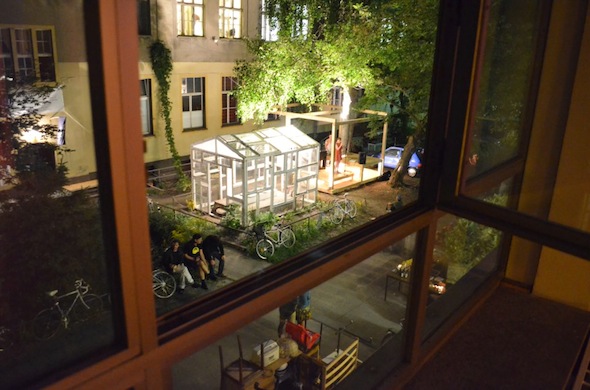 Brett Gustafson – “Pavillion”; HomeBase Build III; Photo by Sina B Hickey
Brett Gustafson – “Pavillion”; HomeBase Build III; Photo by Sina B Hickey
Introduction
The HomeBase project is an artist residency program based in Berlin, New York and Jerusalem. Siting itself in an “urban environment undergoing transitional changes” such as Pankow, the project aims to rise up to Modernism’s formative challenge of integrating art and life, utilizing the notion of ‘home’ and the domestic as a pivot to integrate art into every day local experience. BAL caught up with HomeBase project founder Anat Litwin to talk artists’ dinners, community centres and the retrieval of utopias.
Interview
JENI FULTON: How did you come up with the idea for HomeBase?
ANAT LITWIN: It started in New York in 2006, when I invited international artists to a space I found, an old Polish bank in Greenpoint. Each artist received a room in the bank.
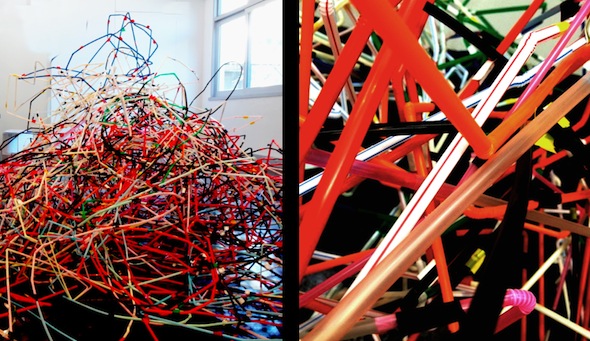 Hai Holidays, Anat Litwin, Straws and Tape, HomeBase residency at Youkobo Art Space, Tokyo
Hai Holidays, Anat Litwin, Straws and Tape, HomeBase residency at Youkobo Art Space, Tokyo
Our playground is this changing urban landscape, and we take over empty spaces in neighbourhoods that are undergoing change. After Greenpoint, we were in a historical building in Sugar Hill, Harlem. We were occupying this space in a neighbourhood that is loaded with questions of racism and gentrification and lots of tensions. It’s not an easy place to show up with an art project, with mostly white people. Touching those open nerves is such an interesting aspect of it because it’s not simply a cozy, nice homey thing we’re creating but a real effort to understand what home means there. That attracted a lot of attention.
Are the historical arcs of the sites a conscious choice?
They’re conscious: we choose buildings that have some kind of particular history but most of the time we only unfold that history when we’re actually there. The architecture and the character of the space usually reflect some interesting aspect of the city.
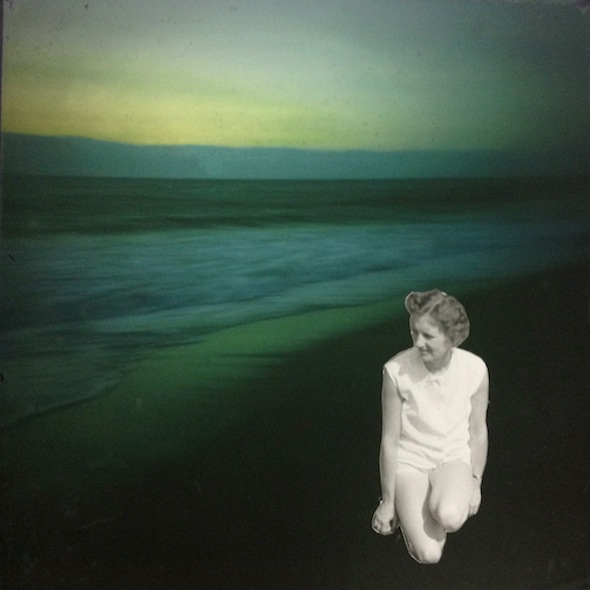 Eva Gjaltema – “Fernweh & Heimweh I” (2012), HomeBase exhibition
Eva Gjaltema – “Fernweh & Heimweh I” (2012), HomeBase exhibition
How do you choose the people who participate?
We chose artists who are interested in challenging questions about art and everyday living. Home can be very intimate and domestic and at the same time there’s a lot of honesty there. It’s also about site-specificity and responding to the history of a site or neighbourhood. It’s an open call process and we have a committee built from curators, alumni and team members who select the artists. In each residency we invite about fifteen artists, plus guest artists, lecturers and performers.
The structure of the Nomadic HB Project is built as following: participants have three weeks to create a site-specific work, followed by three weeks of open house with a full cultural program. The structure of the HB LAB program includes a three month residency that accumulates with a three day open festival. People come here to live and work on site, cook on site, interact on site. We also host artist dinners, sessions, lectures by neighbours about the history of the site and about home in different cultures.
So tell me more about your concept of Home and what aspects of it you’re exploring?
I think its really stemming from this need to create a place that explores how art is a part of life. I guess it’s a very personal need. At the same time it’s utopian and collaborative – how to exist in a way that really respects art as something that has the power to shape lives. Home is co-creating with others a shared sense of belonging. The HB team work, relationships and creative collaboration, along with the community we have built together is surely at the core.
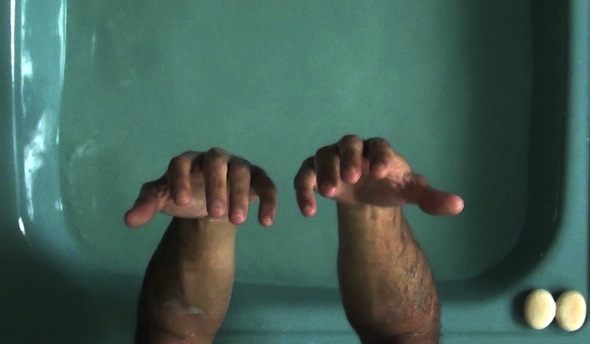 Adrian Brun – “The Inspector” (2012), single-channel video installation 16.12′ (loop); HomeBase Build III
Adrian Brun – “The Inspector” (2012), single-channel video installation 16.12′ (loop); HomeBase Build III
That has always been the question of the avant-garde.
Absolutely. There is the intimate, domestic aspect of home but at the same time there is the urban aspect, about how we can serve as artists. There is the context of Bourriaud and ‘relational aesthetics’. The need for HomeBase to exist in other cities is strong. There is a sense of alienation that’s out there: how do you create a place that can really bring people together and create a sense of connectedness that is sincere? A space of expression and identity that is enriching and educational. Otherwise how are we going to really make this a better place at all? We always brought in two artists from the neighbourhood. We also work with the community by inviting organizations and artists to contribute to the cultural program: performances, lectures, workshops. We had a circle of old ladies that came to knit at HomeBase and people from the local church came in to give a talk about home. It is the idea of a microtopia, where the small event matters.
In terms of relational aesthetics, it’s almost like perhaps replacing the community centre to some extent, which have started to seem staid and uninteresting. When artists are at the centre of such a project and help create the context, a different type of community centre ensues, one where artists are really mediators, architects of meaning. They take on a different role.
___________________________________________________________________________________
Additional Information
HomeBase arrived in 2010 to a historic brewery in Pankow, Berlin. In 2011 it opened there the HomeBase LAB – a year round research and residency program exploring home, with more focus on issues of sustainability, community and urban living. The HomeBase LAB is run by a team of artists and social entrepreneurs, including Heather Mckee, Bas Kools, Nikki Hendrikx, Adrian Brun and Sarah Ludemann, who live, work and create on site.
More information about The HomeBase project: homebaseproject.org
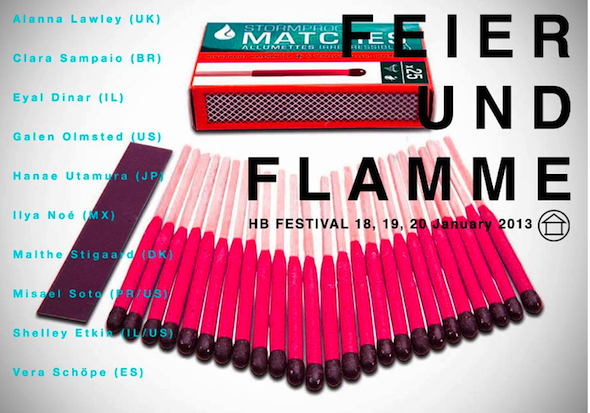
___________________________________________________________________________________
Jeni Fulton is a writer focusing in and on the international Berlin art scene. She is currently working on her PhD thesis in contemporary art theory. Having taken her MA in Philosophy at the University of Cambridge, she now lives and works in Berlin.



















